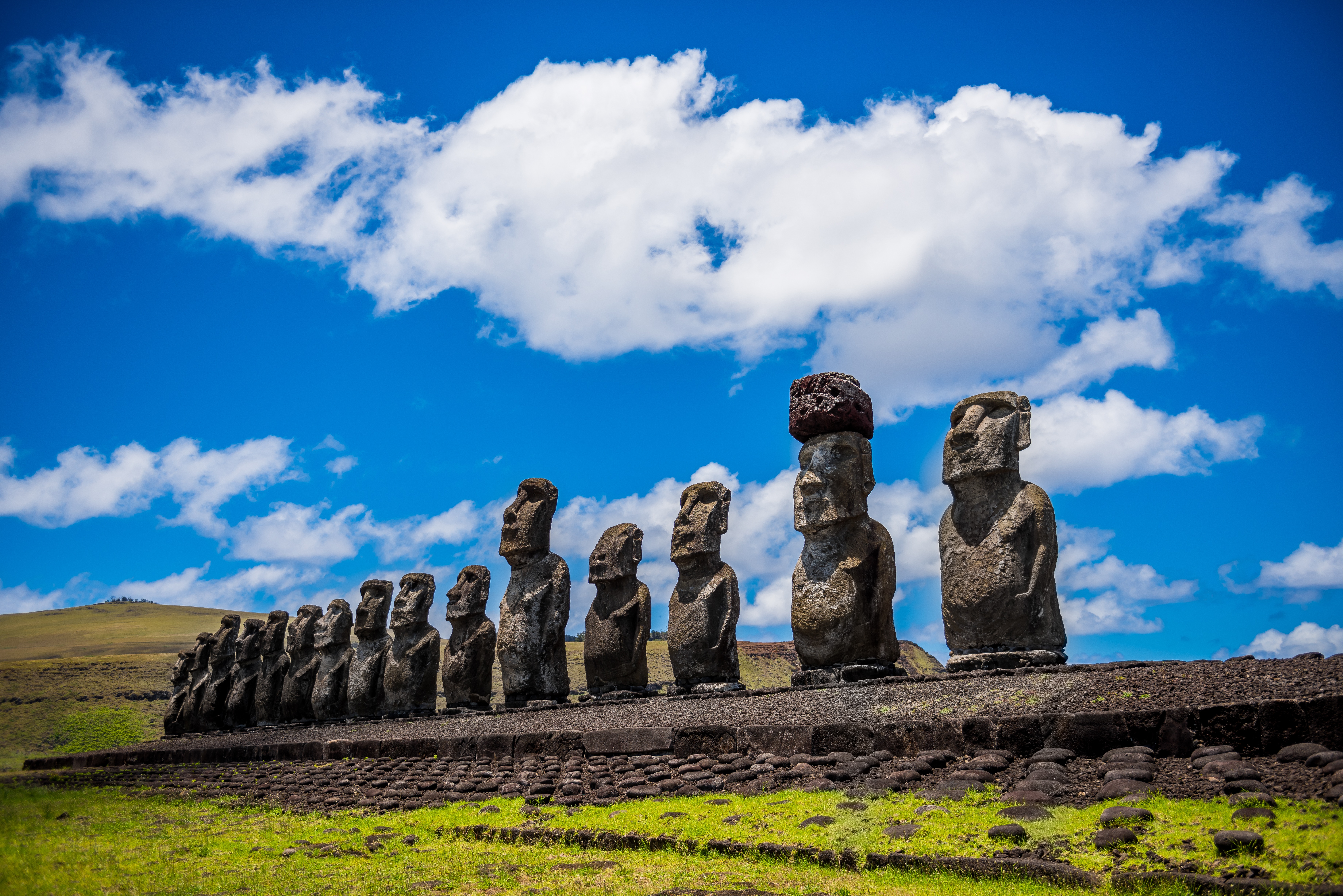Seasonal Waves Could Reach Some of Easter Island's Massive Moai Statues by 2080, New Study Suggests
Researchers warn that rising sea levels could cause flooding that will endanger the historically significant statues, which were created by the Rapa Nui people between roughly 1300 and 1600 C.E.
Sarah Kuta - Daily Correspondent
August 27, 2025

Ahu Tongariki, home to 15 moai statues, is one of Easter Island’s most iconic cultural landmarks. Voltamix via Wikimedia Commons under CC BY-SA 4.0
For centuries, Easter Island’s famous moai statues have stood guard over the remote volcanic island in the South Pacific, withstanding sun, wind, rain, lichen and even fire.
But in the coming decades, scientists fear the stone figures might face their biggest challenge yet: rising sea levels caused by climate change. Seasonal waves could reach some of the island’s most iconic moai by the end of the century, according to a new study published in the Journal of Cultural Heritage.
“Unfortunately, from a scientific standpoint, the findings are not surprising,” says lead author Noah Paoa, an earth scientist at the University of Hawaii at Manoa, in a statement. “We know that sea level rise poses a direct threat to coastlines globally. The critical question was not if the site would be impacted, but how soon and how severely.”
Quick fact: How big are Easter Island’s moai statues?
The largest statues are nearly 30 feet tall and weigh as much as 80 tons.
Located some 2,200 miles west of mainland Chile, Easter Island—also known as Rapa Nui—is one of the most remote inhabited islands on the planet. The island spans roughly 63 square miles, 28 of which are protected as a national park and a UNESCO World Heritage site.
Archaeologists think the first inhabitants arrived on the island sometime between 400 and 800 C.E., though the exact timeline is a subject of debate. The first European to visit was Jacob Roggeveen, a Dutch explorer who reached the island on Easter Sunday in 1722.
More:
https://www.smithsonianmag.com/smart-news/seasonal-waves-could-reach-some-of-easter-islands-massive-moai-statues-by-2080-new-study-suggests-180987245/
